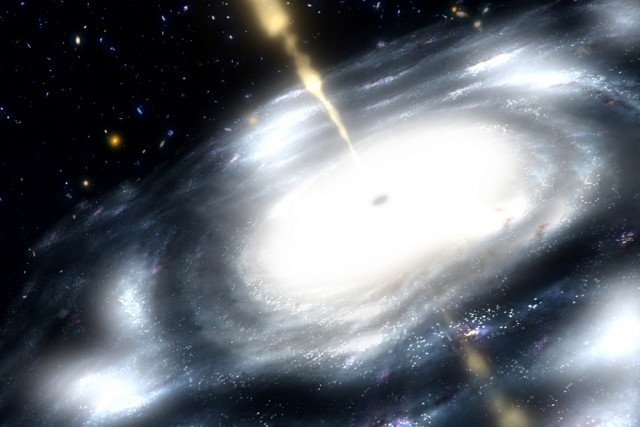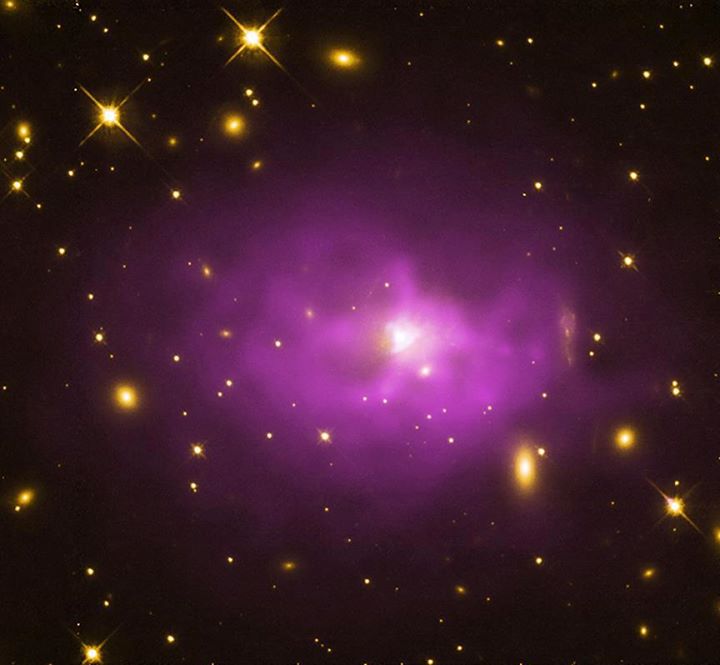
A black hole, by nature, is an extreme object born within the final, volatile few moments of a massive star’s life. Skipping from the first chapter dealing with their formation, to the last:
After birth, black holes bide their time by consuming all matter that comes within the range of their event horizon (the region where the gravitational pull becomes so strong that nothing, not even light—the fastest moving particle in the universe—can outrun its fate).
Once enough matter is consumed, the surface area of its event horizon increases, which allows it to suck in even more material than before (matter that was previously outside of its range). This process can be long and grueling, but given the fact that galaxy mergers are commonplace within the universe, medium-mass black holes (called “stellar mass” black holes) can grow even larger by consuming other black holes. So, in time, medium-mass black holes morph in to supermassive ones (the type found in the center of most galaxies).
For awhile, we believed that black holes didn’t get any larger than that, but we were wrong, for another type of black hole exists. They dwarf even the largest of the large supermassive black holes.
Ultramassive Black Holes:
Meet PKS 0745 (“PKS” for short): an elliptical galaxy located approximately 1.3 billion light-years from Earth (in the Puppis constellation). PKS is notable for being the central anchor of the galaxy cluster known as PKS 0745-19.
At the end of 2012, NASA conducted a survey on 18 of PKS 0745’s supermassive black holes, including the black hole located smack dab in its center. Ultimately, they learned that some of the black holes are ten times more massive than previously thought. Moreover, all of the newly classified “ultramassive” black holes contain an abnormally large cache of hot gas surrounding them. They, in turn, produce diffuse x-ray emission (which can be seen here in purple) when the black hole consumes material.

Overall, stellar-mass black holes contain the mass of between four and ten Suns, while supermassive black holes can harbor the mass of hundreds of millions of Suns (sometimes within the range of a billion). Ultramassive black holes, on the other hand, can be between ten and forty BILLION solar masses (that means that the ten to forty billion Suns worth of material could fit inside of one of these stellar-heavyweights). The natural question to ask is:
How Big CAN They Get?
We know that there are both upper and lower limits to how large a star or a planet can be, before it goes outside of its typical classification. Until the last few years, however, we weren’t sure if black holes abide by the same standards (I mean, we already know that black holes can be mind bendingly small). A team of researchers from Yale University set out uncover evidence for one side or the other, with conflicting results.
Their research indicated that after a certain period, the growth of the most massive black holes begins to stall, with them eventually “powering off.” Actually, it might be more precise to say they self-destruct. No matter the epoch, once black holes acquire the mass of about ten billion suns, they no longer seem to grow. The reason for this may lie in the unquantifiable amount of energy they radiate. They eventually become so large and strong that they eat away at their food source (like the gas and dust that circle the event horizon, or gather in the accretion disk).
This sounds reasonable until you consider the fact that astronomers have since come to the realization that ultramassive black holes are MUCH larger than we originally expected them to be, which might mean that there is no upper-limit. Black holes may simply never stop growing.